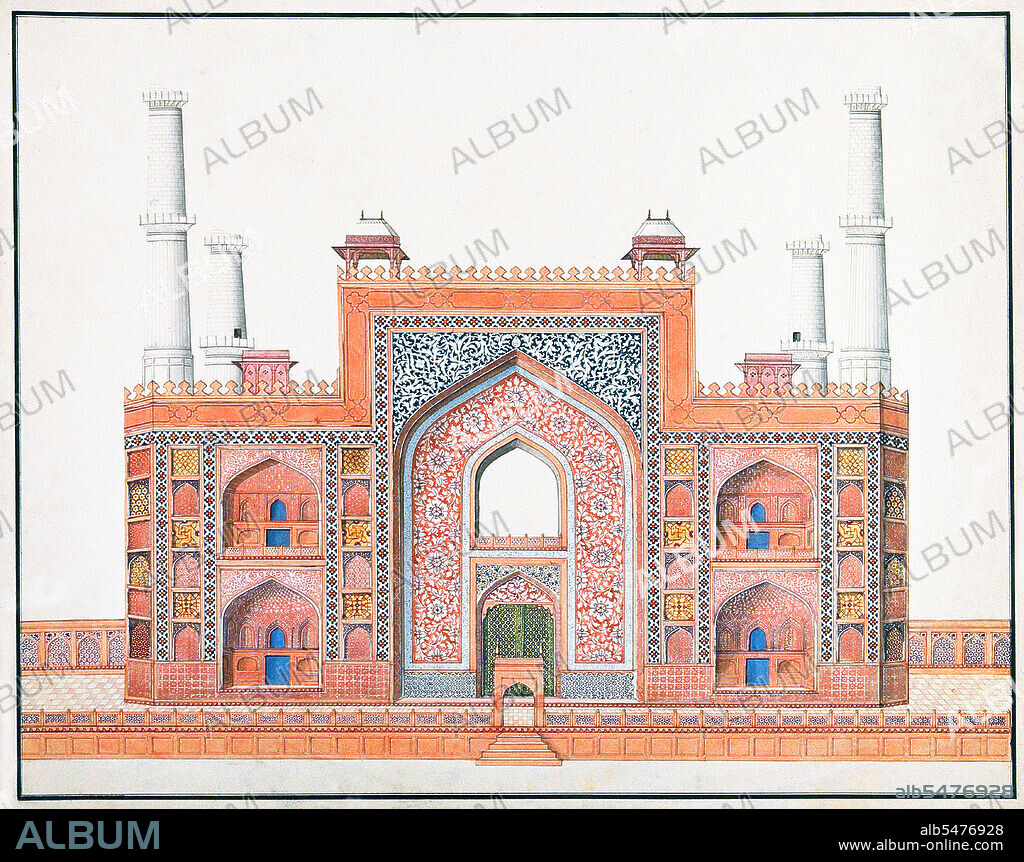alb5476928
The early 17th century Mausoleum of Mughal Emperor Akbar, Sikandra, Agra, Uttar Pradesh. East India Company, early 19th century.

|
Ajouter à une autre Lightbox |
|
Ajouter à une autre Lightbox |



Avez-vous déjà un compte? S'identifier
Vous n'avez pas de compte ? S'inscrire
Acheter cette image.
Sélectionnez l'usage:

Titre:
The early 17th century Mausoleum of Mughal Emperor Akbar, Sikandra, Agra, Uttar Pradesh. East India Company, early 19th century.
Légende:
Voir la traduction automatique
The Tomb of the the third Mughal Emperor Akbar (r. 1556-1605) is an important Mughal architectural masterpiece, built 1605-1613 and set in 48 Ha (119 acres) of grounds in Sikandra, a suburb of Agra, Uttar Pradesh, India. Emperor Akbar himself commenced its construction around 1600, according to Central Asian tradition to commence the construction of one's tomb during one's lifetime. Akbar himself planned his own tomb and selected a suitable site for it, after his death, Akbar's son Jahangir completed the construction in 1605-1613. The south gate is the largest, with four white marble chhatri-topped minarets which are similar to (and pre-date) those of the Taj Mahal, and is the normal point of entry to the tomb. The tomb itself is surrounded by a walled enclosure 105 m square. The tomb building is a four-tiered pyramid, surmounted by a marble pavilion containing the false tomb. The true tomb, as in other Mughal mausoleums, is in the basement. The buildings are constructed mainly from a deep red sandstone, enriched with features in white marble. Decorated inlaid panels of these materials and a black slate adorn the tomb and the main gatehouse. Panel designs are geometric, floral and calligraphic, and prefigure the more complex and subtle designs later incorporated in Itmad-ud-Daulah's Tomb.
Crédit:
Album / Pictures From History/Universal Images Group
Autorisations:
Modèle: Non - Propriété: Non
Questions sur les droits?
Questions sur les droits?
Taille de l'image:
4700 x 3713 px | 49.9 MB
Taille d'impression:
39.8 x 31.4 cm | 15.7 x 12.4 in (300 dpi)
Mots clés:
ARCHITCETURE • ARCHITECTURE ISLAMIQUE • ARCHITECTURE • ARCITECTURE • ART (CATÉGORIE) • ART • ASIE • ASIE, CONTINENT • CAVEAU • CONTINENT ASIE • FUNÉRAIRE • GISANT • HISOIRE • HISTOIRE • INDE • INDES • INDIEN • INDIENNE • INDIENS • ISLAM • ISLMAM • MAUSOLEE • MOGHOL • MORT TOMBEAU • MUSULMAN • MUSULMANE • MUSUSLMAN • RELIQUAIRE • SÉPULCRE • SÉPULTURE • TOMBE • TOMBEAU • TOMBEAUX • TOMBÉS
 Pinterest
Pinterest Twitter
Twitter Facebook
Facebook Copier le lien
Copier le lien Email
Email
